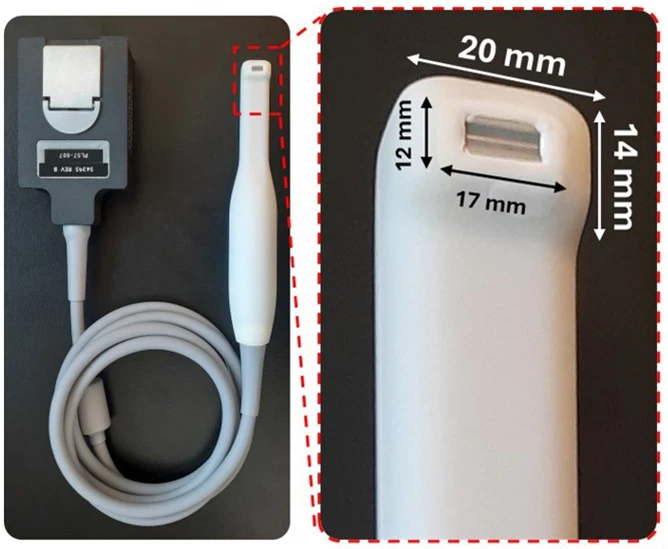When it comes to dental checkups, no one likes having their gums poked with the periodontal probe. Well, they may soon no longer have to, thanks to a gum-assessing toothbrush-shaped mini ultrasound transducer.
A periodontal probe is an instrument which is used to measure the depth of potentially problematic pockets which may form between the base of each tooth and the surrounding gum tissue.
In order to perform that measurement, the long, thin, marked tip of the instrument is inserted between the tooth and the gum. Not only can this process be painful for the patient, it may also irritate their gum tissue. That's where the new transducer is intended to come in.
Developed by Prof. Jesse Jokerst and colleagues at the University of California San Diego, the handheld hardwired device is about the size and shape of an electric toothbrush. Its sideways-facing head measures just 20 mm wide by 14 mm high, making it small enough to reach even the molars in the back of the mouth.

Once in place against the gums, it emits pulses of ultrasound which reflect off both the gum tissue and the underlying tooth itself. Those echoes are detected by the device, which uses them to create an image of the tissue and the tooth, complete with any pockets that may be present.
Although other miniaturized ultrasound transducers do already exist, most of them are limited to producing low-frequency ultrasound which results in low-resolution images. Thanks to its unique design, however, the UC San Diego device combines a small form factor with high-frequency (40-megahertz) ultrasound, for much sharper images.
When the device was used to assess gum thickness and height on pig jaws – which have a tooth structure similar to that of humans – its measurements correlated by 95% with those made by a traditional periodontal probe.
"We designed this tool to meet the realities of clinical dentistry – it is miniaturized, accurate and easy to use," says Jokerst. "Future work will use this device with patients to image below the gumline, where we will monitor treatments and diagnose earlier to reduce dental pain and help patients keep a healthy smile."
A paper on the research was recently published in the journal ACS Sensors.
Source: American Chemical Society



